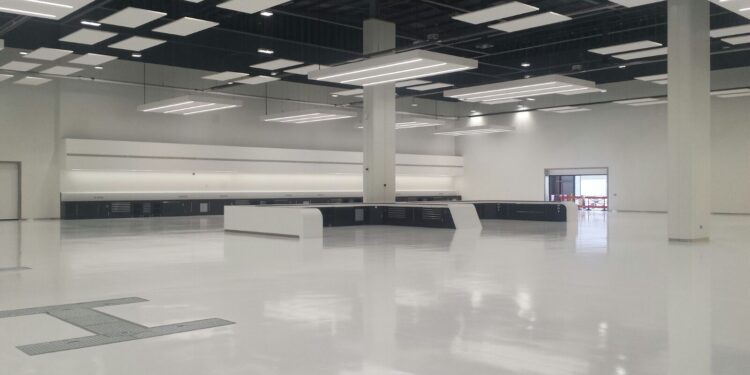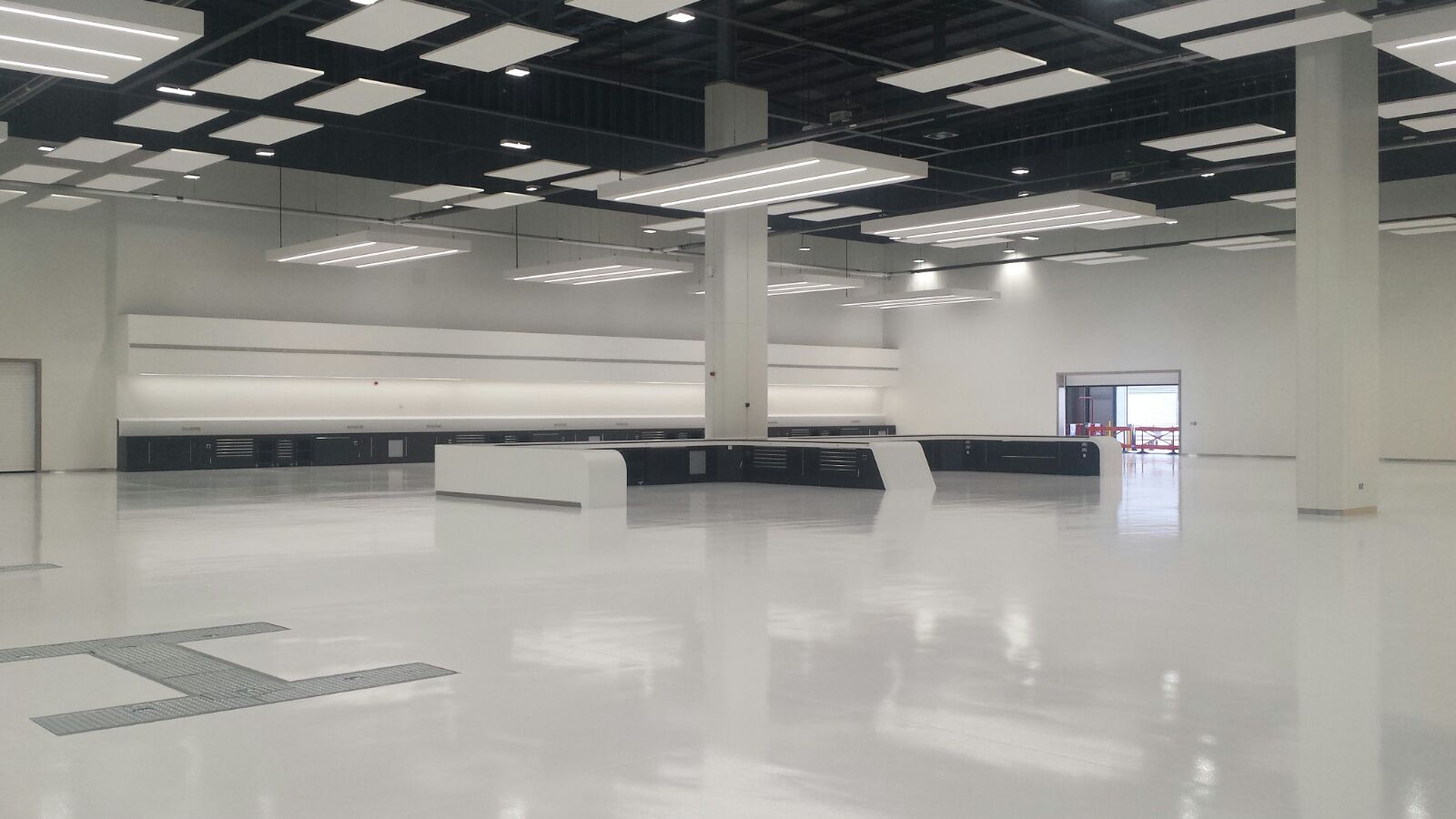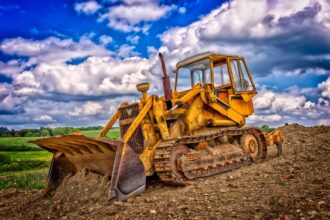Industrial Flooring Solutions: Trends, Challenges, and Smart Choices


Table of Contents
- 1 Key Takeaways
- 2 Why Industrial Flooring Matters More Than Ever
- 3 What Are the Most Common Types of Industrial Flooring?
- 4 Key Factors to Consider When Selecting Flooring
- 5 Emerging Trends in Industrial Flooring
- 6 Challenges With Installation and Maintenance
- 7 Economic Benefits of Smart Flooring Choices
- 8 Real-Life Examples: Making the Best Decision
- 9 Looking Ahead: Planning for Growth and Change
Key Takeaways
- Choosing the right industrial flooring directly affects operational safety, daily maintenance routines, and overall productivity.
- The latest industry trends focus on materials that, thanks to technological innovations, offer greater durability, lower maintenance, and improved safety.
- Every industrial facility has unique demands—knowing these in advance is critical to making wise flooring choices and avoiding costly mistakes.
- Regular, proactive upkeep and professional installation practices extend the life of industrial floors and can lead to significant cost savings over time.
Why Industrial Flooring Matters More Than Ever
In every productive industrial facility, flooring works tirelessly underfoot, shouldering the weight of forklifts, pallet jacks, and rolling carts thousands of times daily. It’s much more than just a surface—it sets the standard for workplace safety, performance, and cleanliness. The risks go beyond mere inconvenience when old or inadequate floors crack, chip, or become slick. According to the Occupational Safety and Health Administration (OSHA), more than a quarter of all workplace injuries result from slip and fall incidents, often caused by unsuitable flooring materials or poor maintenance. Facility managers aiming to protect employees and optimize productivity must think strategically about new surfaces, whether planning a new build or upgrading existing spaces.
Modern flooring solutions like Industrial Flooring Los Angeles go far beyond traditional concrete slabs. They provide tailored options—chemical resistance for labs, anti-slip finishes for food processors, dust-proofing for tech manufacturing, and more. These choices do not just lower accident rates—they simplify cleaning regimens and even lift morale by offering well-lit, color-coded, or aesthetically appealing spaces. The right surface turns a potential safety hazard into an asset that supports team efficiency and well-being.
What Are the Most Common Types of Industrial Flooring?
Every industrial setting presents distinctive challenges, and flooring needs to meet these demands head-on. Four common material choices—polished concrete, epoxy coatings, polyurethane, and sealed concrete—are popular for good reason. Still, it’s essential to understand the unique strengths each brings to the table to ensure the best result.
- Polished Concrete: This surface is especially well-suited for large warehouses and distribution centers. It is favored for its remarkable durability and minimal dust. The smooth finish is easy to clean, reflects ambient lighting to brighten workspaces, and resists stains from routine spills.
- Epoxy Coatings: Chosen for its seamless surface and exceptional resistance to harsh chemicals, epoxy is widely installed in food plants, pharmaceutical labs, and automotive shops. Its customizable colors and gloss levels also make it adaptable for safety marking and branding.
- Polyurethane: Renowned for its flexibility and ability to tolerate acids and temperature fluctuations, polyurethane coatings are perfect in commercial kitchens, beverage plants, and areas cleaned with hot water or exposed to thermal cycling.
- Sealed Concrete: An economical solution for facilities with moderate traffic or lighter-duty applications, sealed concrete guards against dust and staining. Frequent sealing may be necessary in environments exposed to continuous moisture or heavy abrasion.
What works for a bustling logistics hub loaded with forklifts may not serve a clean room or manufacturing plant with strict chemical protocols. Analyzing daily wear patterns and specific hazards is the first step in narrowing options to the best-fit material.
Key Factors to Consider When Selecting Flooring
Decision-making involves more than just comparing price tags. The specific needs of an industrial workspace—based on traffic loads, safety regulations, and the possibility of chemical spills or repeated cleaning cycles—significantly shape which flooring system is most suitable.
- Load-Bearing Capacity: Flooring is often the backbone for massive equipment and product storage in heavy industries. Surfaces must be engineered to resist compressive forces, preventing warping or structural failure.
- Chemical Exposure: Whether from routine cleanings or accidental spills, floors often come into contact with chemicals. A material’s resistance to these agents preserves integrity, prevents corrosion, and protects underground environments.
- Slip Resistance: A textured or treated finish can dramatically reduce accident potential in areas where water, oil, or fine powders are present. Safety can be further enhanced by incorporating color-coded pathways and hazard markings.
- Thermal Stability: Workplaces such as foundries, bakeries, or cold storage facilities put floors to the test. Choose flooring that does not degrade with temperature changes or prolonged steam cleaning.
- Visual Markings: Patterns and distinct colors can help organize traffic, separate work zones, and comply with complex OSHA safety guidelines, saving time and reducing confusion.
Since every factor can dramatically influence overall costs and effectiveness, consulting specialists before starting a project reduces future disruptions and costs.
Emerging Trends in Industrial Flooring
Innovation is transforming industrial flooring through sustainable materials and innovative technology. Minimizing downtime and environmental impact is pushing the industry towards greener, more intelligent solutions. For instance, new coatings feature embedded pigments that shift to indicate heat stress or exposure to unsafe chemicals, instantly signaling personnel when intervention is needed. Some manufacturers now offer integrated floor sensors that monitor moisture, pressure, or even early-stage damage, sending alerts so minor issues can be addressed before they cause operations to halt.
Demand is surging for environmentally responsible options, including recycled or bio-based materials, as highlighted in current construction industry green building trends. These choices provide the dual benefit of minimizing ecological footprints while complying with ever-tightening certifications and regulations, positioning organizations as forward-thinking leaders in their sectors.
Challenges With Installation and Maintenance
Even the highest-quality flooring will fail before its time if installed under poor conditions or with inadequate preparation. Installing a new industrial floor is a highly technical process: contractors must carefully test substrate moisture, evaluate ambient temperature, and follow step-by-step manufacturer guidelines for mixing, curing, and finishing. If corners are cut, issues such as bubbling, delamination, or premature wear may develop, leading to costly shutdowns and floor replacements in the future.
- Implement regular cleaning strategies to limit grit and chemical exposure that erode protective surfaces.
- Schedule periodic inspections to quickly address cracks, chipping, or minor spills before they escalate.
- Plan for routine resealing or recoating, especially in spaces with high vehicle traffic or frequent chemical exposure.
OSHA workplace safety guidelines emphasize the importance of well-maintained, damage-free floors as a foundational element of safe and compliant operations.
Economic Benefits of Smart Flooring Choices
Budget considerations drive nearly every facility upgrade, but focusing on initial costs alone can create bigger problems. While high-performance floors may require larger upfront investments, their returns are often seen in fewer repair bills, reduced cleaning costs, and lower insurance premiums thanks to improved safety statistics. Thoughtful planning and expert installation can lead to years of trouble-free operation, minimizing disruptive repairs and ensuring compliance with insurance and regulatory standards.
In many industries, the difference between passing or failing safety audits—and retaining critical business certifications—can rest on something as fundamental as the quality of the floor. Making investments that pay off in safety, cleanliness, and overall durability is good business.
Real-Life Examples: Making the Best Decision
Consider a busy Midwest distribution center that upgraded from untreated concrete to a robust epoxy system. As a result, slip incidents dropped by nearly half, maintenance crews could clean spills more efficiently, and employees reported a brighter, less stressful working environment. In a West Coast chemical processing facility, switching to polyurethane floors eliminated issues with acid-induced surface pitting, saving the business from costly emergency repairs and unscheduled downtime.
These examples highlight how carefully matching materials to a site’s specific risks and requirements can pay off in operational improvements, overall employee satisfaction, and long-term cost controls. Tailored flooring systems create a safer, cleaner, and more profitable workplace for everyone.
Looking Ahead: Planning for Growth and Change
Successful facility managers don’t just plan for today; they anticipate what tomorrow might require. Whether expanding footprint, adding automated machinery, or preparing for new product lines, floors should allow for flexibility and adaptation. Choosing materials and contractors who understand and can accommodate evolving industry standards is a must. The most flexible solutions let companies scale up or retool operations quickly, with minimal disruption or costly modifications.
Savvy decision-makers who invest in the next generation of industrial flooring can rest assured that their facilities are prepared for future challenges, be it stricter regulations, sustainability goals, or increased automation. With the right team of professionals guiding the process, a new industrial floor becomes more than just a surface; it provides a lasting foundation for safety, efficiency, and growth.






